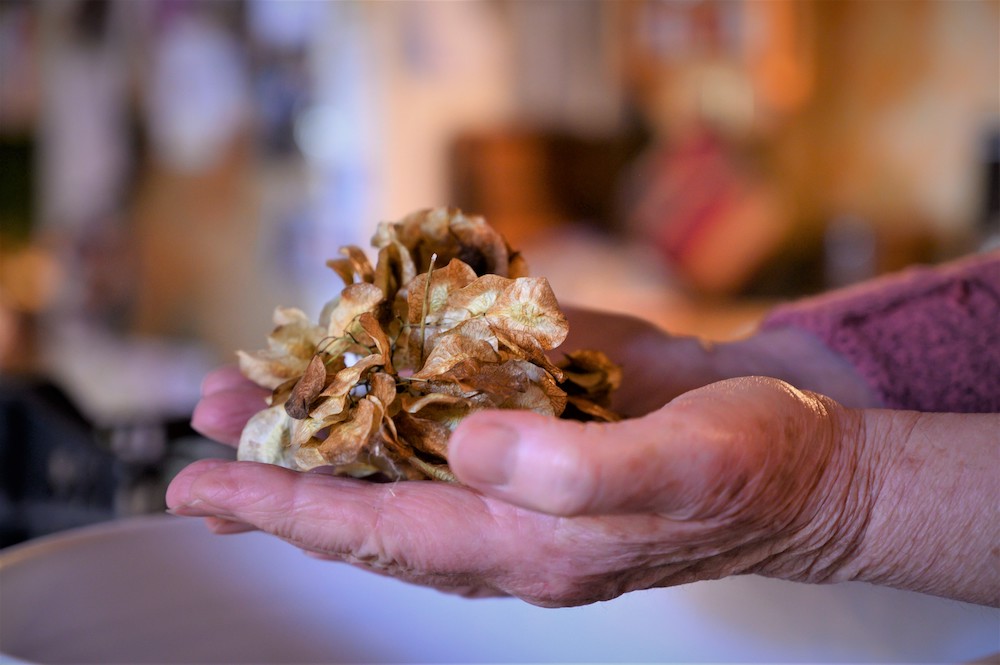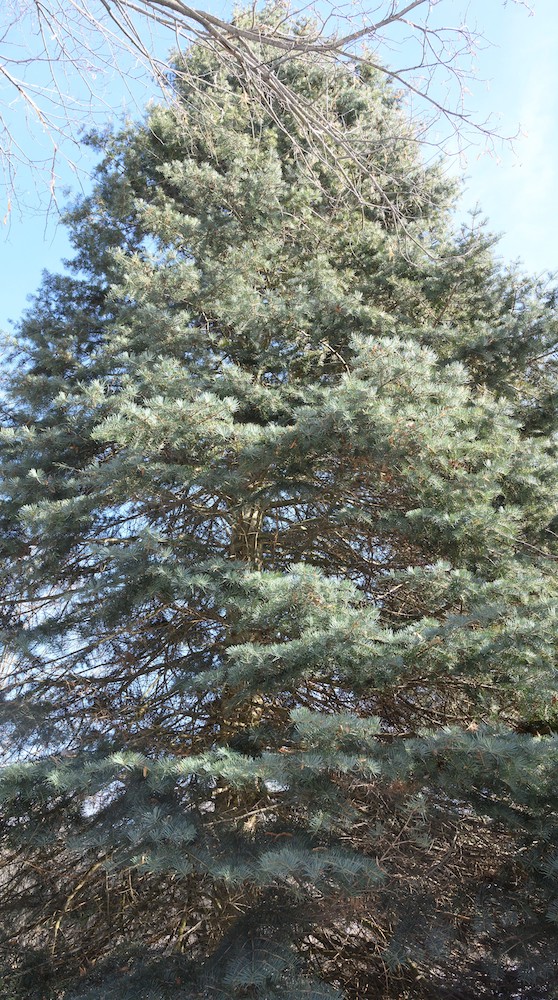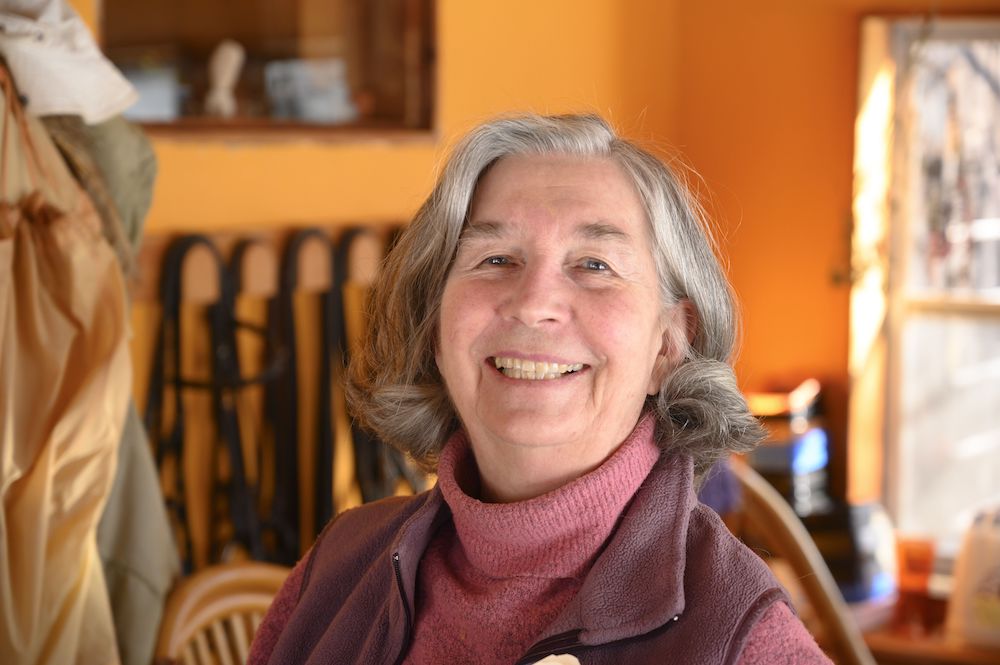Morning light glows through the windows and breakfast is on the table as Diana Beresford-Kroeger reflects on the recent excitement about an idea she proposed over two decades ago.
She has listened to a growing scientific debate about the merits of mass tree plantings to fight climate change with both an air of detachment and resignation.
Last year, one group of researchers claimed that growing a new forest over a global landscape the size of the United States (a 25 per cent increase in Earth’s forest cover) was “the best solution” to battling climate change while others argued that cutting fossil fuel consumption was the true way forward.
The famed botanist and celebrated author of The Global Forest shakes her head about the level of the controversy, and then notes that both sides had a point.
Both sides also ignored her own, unique global bioplan to fight climate change, which she first published in 1999. Her proposal skillfully avoids the pitfalls of commercial tree plantations as well as hubris about licking climate change in one fell swoop.
“Jesus,” adds the eminent Irish-born scientist in her County Cork accent. “We need to know what we are doing, and you can’t go all asswise about stuff.”
“We can’t plant trees everywhere higgledy-piggledy. That won’t work.”
Yet that is what the world has generally done to date, and it is what many governments plan to do more of in the name of fighting climate change.
“Asswise” efforts in Ireland, California, Japan, India and China — all involving non-native trees — have done more damage than good, and bear no resemblance to her own plan.
Take China, for example, which destroyed many of its great native forests during the Cultural Revolution. The nation now boasts that it is the world’s largest tree planter. But it has largely constructed unfriendly monocultures of Japanese cedar, bamboo or eucalyptus that burn at a low flashpoint of 48 degrees Celsius.
Yet science shows that indigenous wild forests do much of the heavy lifting when it comes to storing carbon.
One recent British study found that natural or native forests covering 350 million hectares of land could sequester 42 billion tonnes of carbon, while commercial plantations could only store one billion tonnes.
“There is a scandal here,” said Simon Lewis, a professor of Global Chance Science at the University College London and one of the study’s authors.
“To most people, forest restoration means bringing back natural forests, but policy makers are calling vast monocultures ‘forest restoration.’ And worse, the advertised climate benefits are absent.”

In the botanist’s hands, awaiting planting, the winged seeds of the wafer ash, Ptelea trifoliate. Photo for The Tyee by Colin Rowe.
In contrast, Beresford-Kroeger offers the real deal and a community-based plan to boot. She proposes each person plant one tree native to their community, every year for the next six years.
“Get them in and get them growing,” she says.
It won’t solve the climate crisis, she adds, but it will buy us valuable time by bringing down atmospheric concentrations of CO2 from 400 parts per million to 300 ppm.
“Forty-eight billion trees may seem like a high number to reach but there’s a simple way to get there: just take the first step and keep going,” she writes in her most recent book To Speak for the Trees.
But planting native trees won’t do much good if we don’t stop current rates of deforestation in the Amazon and Boreal forests or reduce fossil fuel consumption at the same time.
To appreciate the simplicity and clarity of Beresford-Kroeger’s plan, let’s return to the great tree-planting debate for the moment.
It all started with a paper published in Science last July by a group of researchers at the Swiss Institute of Technology.
Using remote sensing and computer models with fancy algorithms, the scientists calculated that mass tree planting could sequester an astounding 205 gigatonnes of carbon equal to 20 times the current annual output from fossil fuels, but over a 200-year period.
But to do so would require planting trees on 0.9 billion hectares of land, including savannahs and grasslands in Africa and Latin America.
Jean Francois Bastin, the paper’s lead author, characterized his findings this way: “And this is a beautiful thing, just to think that in order to fight climate change what you have to do is to plant trees, and you can do that everywhere.”
As a result, the paper left the impression in global headlines that “global tree restoration” was probably the “most effective climate change solution to date.”
Then came a flurry of serious rebuttals.
Researchers called the paper’s claim that tree planting was the most effective solution to climate change both “scientifically incorrect” and “dangerously misleading.”
Moreover, they said that Swiss researcher’s calculations had grossly overstated the ability of trees to sequester carbon by nearly 100 gigatonnes.
They also argued that the most effective solution remained systematic reduction in fossil fuel consumption and that tree planting alone wasn’t sufficient.
Others said the model relied too heavily on destroying the valuable biodiversity of million-year-old grasslands, peat lands and savannas by converting them into tree plantations.
A group of indignant African scientists added that “planting trees in the wrong places can destroy ecosystems, increase wildfire intensity, and exacerbate global warming.”
Beresford-Kroeger, who has studied trees and their medicines intensively for decades, couldn’t agree more.
“Keep the prairies and savannahs the way they are,” she insists.
“They have been largely destroyed but replant the native grasses and legumes that make that soil. You have to study what you have and what was there and reinvent the forest and put it back. But no ecological archaeologists have gone back and looked at what was burnt and what happened here before. We need to have an archaeological framework, too.”

Trees on the grounds of Diana Beresford-Kroeger’s home. If greed is the enemy, a step against it, she says, is to ‘start with something as small as an acorn and nurture it into an oak, a master tree that we have grown and protect and are the steward of.’ Photo for The Tyee by Colin Rowe.
Still, Beresford-Kroeger believes that planting the right of kind of native trees in their native homes can restore ecosystems, reduce wildfires and slow down climate warming. (Her app, Call of the Forest.ca, serves as a geopositioning tool to help people do just that.)
But few want to take the care or time to do it right, she explains.
Ireland, for example. In ancient times, rich oak and broad-leaf forests enriched 80 per cent of the island and Celtic lore exuded a wealth of tree knowledge.
(As a child, Beresford-Kroeger was not only taught that lore by Gaelic-speaking elders but entrusted with its keeping.)
But by the 1900s, greed had denuded the Irish landscape of trees and reduced forest cover to one per cent.
Population growth and British imperialism in the form of penal laws all played a role. The colonizers also chopped down native deciduous forests to make charcoal, glass and war ships. The destruction of forests also became a military priority because they shielded and hid rebels opposing British rule.
Forests now occupy 11 per cent of Ireland and the country is committed to reaching 18 per cent coverage by 2050 with the hopes of offsetting its growing carbon footprint from dairy farms, vehicles and fossil-fuel power plants.
But most private interests and foresters can’t be bothered to replant what was lost. To date, the vast majority of Ireland’s new tree plantations consist of conifers including Canadian lodgepole pine (Pinus contorta) or Sitka spruce (Picea sitchensis). Why? Because they grow fast.
Yet industrial monocultures of lodgepole pines have acidified soils and waterways while plantations of Sitka spruce have crowded out native wildlife and created what rural residents describe as “load of crap forestry.”
“The Irish now know that the Pinas contorta are killing trout lakes and now they are taking the trees out,” added Beresford-Kroeger.
 A rare mountain blue fir towers above Beresford-Kroeger’s home in the township of Loyalist, Ontario. Her former home of Ireland, once 80 per cent forested, aims for 18 per cent by 2050. Photo for The Tyee by Colin Rowe.
A rare mountain blue fir towers above Beresford-Kroeger’s home in the township of Loyalist, Ontario. Her former home of Ireland, once 80 per cent forested, aims for 18 per cent by 2050. Photo for The Tyee by Colin Rowe.
The plain-speaking botanist also explains why the Irish didn’t plant native species like oak in the first place.
“Because there is more work involved in the planting of an oak tree than a pine. It is only laziness. That’s is all.”
She has observed the same convenient behavior in her own community in Ontario where native trees once flourished in poor soil.
“Our neighbours planted a jack pine, a tree from the arctic (Pinus banksiana). But they should have planted white cedar and hemlock. We are doing everything arse backwards and putting the cart before the horse.”
California has made the same modern mistake. It planted the alien eucalyptus because it grows rapidly.
The eucalyptus doesn’t shed its leaves but loses its bark which is full of resin and has a low flashpoint.
“It is like throwing petrol on a fire,” says Beresford-Kroeger. “They are a dangerous tree in California,” given the number of people throwing “beefers, reefers and all kind of cigarettes out the car window.”
In their native Australia, 900 species of eucalyptus trees are finely tuned to the landscape and at one time helped to ensure rainfall patterns now disrupted by the recent felling of 40 per cent of that continent’s native forest.
Instead of foreign trees, Californians should have planted more native redwoods and the giant sequoia, advised Beresford-Kroeger.
“They are tolerant of fires. Even with a quick flash fire, a redwood isn’t going to bat an eyeball. In fact a little ash around the tree will help make it more fertile. The redwood acts like a firewall and protects more open pastures and other trees in the area, not to mention houses.”
The redwood, which sports fire-resistant bark that can grow up to two feet thick, also plays another important role, says Beresford-Kroeger.
The giant redwoods gather moisture from the ocean. “They drink mist which is pure water and it saturates the trees,” explained the botanist. “They become condenser units. The trees make the whole area of California much safer from fire and fills the aquifers.”

Diana Beresford-Kroeger on the trick to planting 48 billion trees: ‘Get them in and get them growing.’ Photo for The Tyee by Colin Rowe.
Approximately 300 hundred million years ago, trees transformed a toxic cloud of CO2 in the global atmosphere into something that could sustain life by sequestering carbon and manufacturing molecular oxygen.
Beresfored-Kroeger thinks native trees planted in the right place can play a major role again in global history. Doing so is an answer to people who ask, what I can do?
“I think taking care of rare or native tree personalizes the response with hope. It puts the first boot on the ground.”
But she acknowledges that it is not the ultimate solution to climate change. Rather, “it is a means of reversing the damage done and of buying us time to find the solution, of stabilizing the climate long enough to address our destructive behaviours in earnest,” she writes in To Speak for the Trees.
Beresford-Kroeger believes that something as humble as planting hairy hickory in southern Ontario or an endangered Garry oak in southwestern British Columbia can seed a cultural revolution, too.
At the same time, she argues in a piece she’s written for The Tyee which runs today, the devastation of the world’s forests makes urgent using natural cloning and the creation of a “living bank of tree seeds” to “either mend or amend what remains of our global forests.”
My two-day visit with the brilliant botanist, and now friend, is winding down. Before it’s over, she again musters that liberation of the mind the Celts called saoirse in making the case why it is good and necessary for each of us to plant a native tree.
“If we start with something as small as an acorn and nurture it into an oak, a master tree that we have grown and protect and are the steward of, if we have that kind of thinking on a mass scale, then the planet is no longer in jeopardy from our greed.”
This ends our five-part series drawn from Tyee contributing editor Andrew Nikiforuk’s two-day visit with botanist Diana Beresford-Kroeger. Find the entire series here. ![]()





